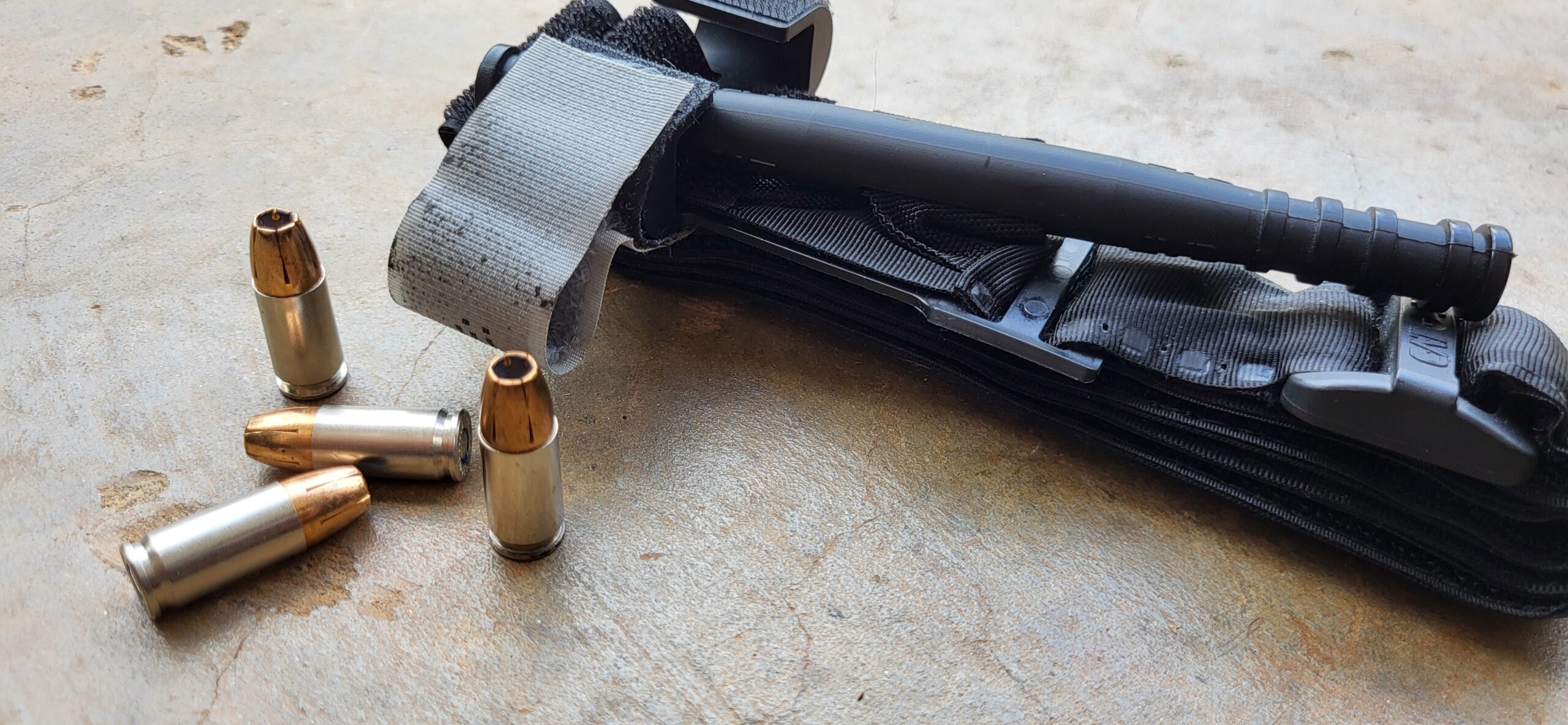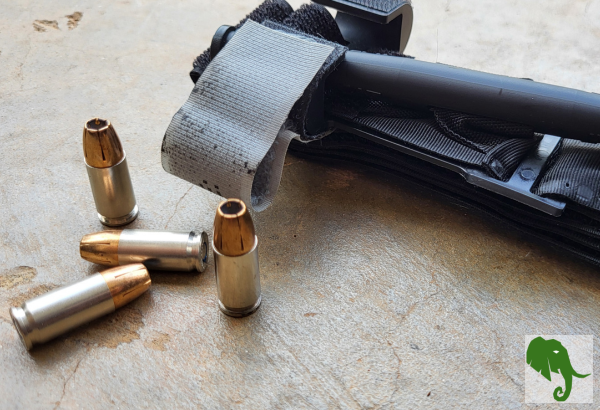
To-date, I have had the opportunity to participate, as a volunteer, in 3 different active killer training events, an elementary school, a large shopping mall, and a major metropolitan public mass transit train station. I have also been able to train in how to potentially fight back and physically respond to an active shooter situation. I am going to share these experiences here along with my top takeaways from these active killer training events.
Perspective
Let me start by saying we shouldn’t have to talk about such things; but unfortunately, it is the world we currently live in. The good news? In the overall scheme of things, these sorts of things really do not happen all that often. While the news outlets may have us convinced otherwise, they are still rare overall, even if they may happen more than they once did. That does not mean though that we should ignore them or live with our head in the sand. They happen and they can happen most anywhere. Therefore, we still need to pay attention to what is going on and the people around us wherever we are and say something if we think something seems out of place.
Terminology
You may be more familiar with the terms ‘active shooter.’ However, even at a large scale, any tool can be used to harm or kill others, so I am using ‘active killer’ here to help remind us that it is not about the tool used. Even in my volunteer experiences, there were differing ways folks were attacked or killed.
Understand too I do not talk a lot here about looking for cover to hide or running away to escape. As a volunteer, I was given a space and a specific role to play, so I am writing mainly about those experiences. Hiding or running (escaping) might be options in reality, depending on the situation.
NOTE: I do not and will not discuss the steps involved to prepare or stage for such exercises or the procedures and protocols used by law enforcement. This is to help protect the activities and help keep the protocols secure. If you happen to be here to try and discover those details, you can leave now.
3 Active Killer Events
Through my county’s Community Emergency Response Team (CERT) program, I was able to take part in 3 active killer scenario exercises as a volunteer and I want to share my top takeaways from these active killer events.
Elementary School
The first exercise I ever got to participate in took place in an elementary school in the city where I live. It was closed for the day for some holiday or teacher’s workday. Multiple first responders across different departments, including law enforcement and EMT, were present from multiple jurisdictions.
By-Stander in a Classroom
The first scenario in the school for the day involved an active shooter in the school building, a parent’s and teacher’s worst nightmare, I’m sure. While myself and 1 or 2 other folks were stationed, as by-standers, in a back classroom on the upper floor of the building, the sound of the gun shots were still distinct and memorable. They were definitely not balloons popping.
As it turns out, it was a Springfield M1A .308 caliber rifle being used for effect, for those of you who might know what that is. Even with blanks (cartridges loaded with gun powder for sound but no bullets used), it was still a bit unnerving.
As we stood in this empty classroom, after we heard the gunfire, we waited for what might happen next. We were not sure if the shooter was going to be coming to ‘kill’ us or if it would be first responders to rescue us. As it turns out, it was law enforcement. They came into the classroom we were in, guns drawn, trying to determine if we were good guys or possibly bad. Of course, they learned we were good guys trapped in the room due to the circumstances. They wound up leading us out to safety.
Takeaways
Law enforcement is generally first to come through. They are looking for the bad people first; and are jacked up on adrenaline, even in training scenarios. The best way to interact is to respond to their inquiries calmly as you can and to comply with anything they ask you to do. Worry about whatever later. Your job is to get out of the situation and go home safe.
By-Stander in a Hallway
The second role I played, while in the elementary school, was that of another by-stander, this time in a hallway upstairs again.
My role was to be present but not entirely tuned in to what may or may not be happening. I was pretty much in my own world at the time. There was a body down near my vicinity too.
Law enforcement, including SWAT members, barged through a door at the top of a staircase very close to where I happened to be located. They were in no mood to play; and again, guns were drawn. I played as though I was unsure of what they were doing there or what they were saying to or asking of me. They took no risks with who I might be, as to them, I could have been a perpetrator. To make a long story short, I found myself on the ground, with a knee or two in my back, and handcuffs on my wrists. That was a first… After they had me handled, they proceeded down the hallway looking for bad guys to shut down.
Takeaways
Again, listen and comply with law enforcement. They may have to deal with you in a more harsh manner than you feel is fair, knowing what you know as an innocent by-stander. The reality is that they do not know. Again, deal with whatever later. Your goal is to get out and go home safe. Comply and do not get shot. Law enforcement is pumped and stressed, even in training scenarios. They are definitely jacked on adrenaline, like anyone else would be. Plan accordingly by not making any wrong moves.
Victim of a Machete Attack
As I mentioned previously, it is not about guns (or any other tools), it is about the intent of the human(s) using the tools.
This final scenario for the day had me playing a victim of a machete wielding attacker going through the elementary school looking for victims. There is not a lot to report here, as the attacker attacked me and chopped me up before moving on in efforts to find other victims upstairs.
Takeaways
A scene where an individual (or individuals) is intent on harming others has little to do with the tool(s) and more about the intent or mental status of the individual(s) inflicting the harm. A gun, a knife, a machete, a vehicle, or anything else that can be wielded by one that is intent on causing harm can all be used somewhat effectively when resolved to do so.
Large Local Shopping Mall
Next, I was able to participate in a large-scale initiative at a large, local shopping mall. First responders and volunteers all started showing up around 5:30 AM the day of the exercise at this large local shopping mall. Again, multiple first responders across different departments, including law enforcement and EMT, were present.
My role was to be that of a victim again. My position was just outside of a large department store. I was laying down on the cold floor of the mall pretending to be an injured victim… again.
There are no additional takeaways from this experience aside from the ones I mentioned previously. I did manage to grab a couple of spent and unspent simunition rounds (special cartridges with plastic projectiles that have marking liquid to indicate hits) from the scene. Were those my literal takeaways?
I recall while I was playing injured or dead on the mall floor, there were a lot of simunition rounds flying over the tsop of me between law enforcement and the ‘bad guys’ at a point. Perhaps the takeaway this time is to remember to stay out of the way of flying bullets?
I was just happy to be a part of it and have another opportunity to experience things again first-hand.
Large Metropolitan Public Transit Train Station
This was by far the largest production; and I was fortunate enough to be able to take part in it. I cannot remember the number of cities and counties represented by their first responders, i.e. fire and rescue, EMT, paramedics, and law enforcement. They shut an entire train station down in downtown late at night for this multi-jurisdictional training exercise. Those of us volunteering got moulage make-up to add to the overall realism; and at a point during the night, they fed us as well.
The ‘bad guys’ were firing AK-47s (with blanks, of course) and setting off explosives (akin to large fireworks) inside of the train station. Gunfire and explosions are loud in a subterranean train station, if you were wondering. Those of us who were victims were lying around on a station platform with our various moulage make-up injuries. I had a gunshot wound to one of my calves.
The Wait
When the exercise was in play, I realized that no one was coming to save those of us that were injured, at least not very quickly. It felt like we laid on that platform for quite some time. It made me think just how all alone we would be if the situation was real. I realized too just how important it would be to be able to render aid to myself assuming I had gear or could get to gear in time, and of course, if I was not dead yet or had not passed out.
I happened to be near an Emory nursing student on the platform that night; and even she acknowledged that we would be needing to render care to ourselves and each other if we had the means to do so. Help simply was not coming quickly.
First responders finally came through but were not focused on the injured at all, as their first responsibility is to find and put down the ‘bad guys,’ in order to eliminate the threat. (Remember too, they had a lot of ground to cover looking for the bad guys in this case as well.) Then and only then would they work to find and take care of those injured during the incident. Fire and EMT does not come through until things are clear. (I understand this tactic may be getting updated so that the injured can maybe get care sooner; but at the time, that is how it was.)
The Rescue
Ultimately, I was carried out by a couple of members of the city’s SWAT team on a board with the AR-15 of one SWAT team member knocking against the top of my head as they moved. While I was playing unconscious, all I could think was ‘please don’t drop me,’ as they carried me up some stairs and up and over a turnstile exiting the station. I wound up being deposited in a triage area outside of the train station in some adjacent street under a pop-up canopy as shelter. My duty was complete.
Takeaways
It may take some time for first responders to get to you and get you out. You better know some trauma care to take care of yourself, and those around you, while you wait. Depending on the situation and your injuries, you might die before you get ‘saved’ if you cannot take care of it yourself. Of course, this mostly matters if you have not been able to get out on your own.
Training for Active Shooter Scenarios
I went through some active killer training in Charlotte, NC once; and I liked it so much, I went through it again in time.
We not only learned attack and fighting strategies; but we also learned basic trauma care and how to deal with severe bleeding.
Fighting When There is No Hiding or Running
We learned how to overtake an individual that has a firearm by coming up from behind and at an angle to take their firearm away, as well as coming up from behind focusing low on their legs to bring them down allowing one to get better control of them and their firearm. Of course, it always depends on the scenario and the environment you are working with all have bearing on what you might be able to do.
While these techniques may not be applicable for every possible weapon that could be in use, it did give us some ideas for attacking as needed and, most importantly, the mindset needed to execute.
Takeaways
If you are going to attack, commit and execute. No hesitancy. Follow through with no delay. Ideally, you can coordinate a group effort, as your chances are far better in numbers. Strike hard and strike fast, with no forgiveness. Overwhelm. Sure. We will be scared and have a lot of adrenaline pumping; but that is why mindset to commit to the attack, follow through, and survive is paramount. The other takeaway is that there is a definite need and a value in being able to render basic trauma aid for severe bleeding to yourself as well as others.
I also have to mention another important takeaway from all of these experiences, in case it is not clear already, and that is hiding or running may not always be an option. If you are not severely injured or dead already, what option remains? Waiting around to possibly get hurt or waiting on the arrival of first responders or… fighting. Circumstances dictate; but I’ll choose the latter.
The Place for Knowing Basic Trauma Care
If there ever were scenarios where basic trauma care had a place, it is active killer scenarios. It would be a great idea if you got some basic training, if you have not already.
Some basic trauma knowledge for stopping severe hemorrhaging is an absolute must. As an example, the Stop the Bleed course is a good one for the general public. Since it started, it gets touted most everywhere as being the course you can take to learn the basics of bleeding control, including the use of tourniquets. And the best part of it is it is FREE. Look for it in your area. If you do not have access to this course, there are lots of other options out there that can give you the training you need; but they may not be free. And of course, there is training available that goes beyond the basics of what is taught in Stop the Bleed as well, if you are so inclined.
No matter. These basic skills are worth any money just so you are not dependent on the system that may have long arrival times to get on scene and run the risk of bleeding out before they do arrive. You will be better educated, not just being able to take care of yourself, but also your loved ones or even perfectly good strangers.
Conclusion
Training and approach to handling active killer situations likely will be evolving/changing/adapting over time. As mentioned, those rendering aid may now be getting to those injured faster than before. While maybe not all of them, I pulled together my top takeaways from these active killer events below.
- Listen to law enforcement’s commands and, most importantly, comply.
- Do not be surprised if law enforcement does not rescue you first. You are not their first priority in all cases. They need to neutralize the threat(s) first and then have medial come in to render aid to those in need. Remain calm and patient, as best you can.
- Have some basic trauma care skills to deal with severe bleeding while you wait to be rescued and cared for.
- Hiding or running to escape may not always be clear options.
- If you cannot get out, be ready to fight and have the mindset to prevail if you want to survive. Ideally, coordinate efforts and look for improvised weapons to give you a better chance of winning the fight. And fight like there is no other way out!
- Consider keeping a tourniquet on your person when you go out.
Hopefully, none of us will ever find ourselves in an actual active killer scenario; but it is my hope these bits of advice I leave you with can help should you ever find yourself in such a predicament.
Related Content
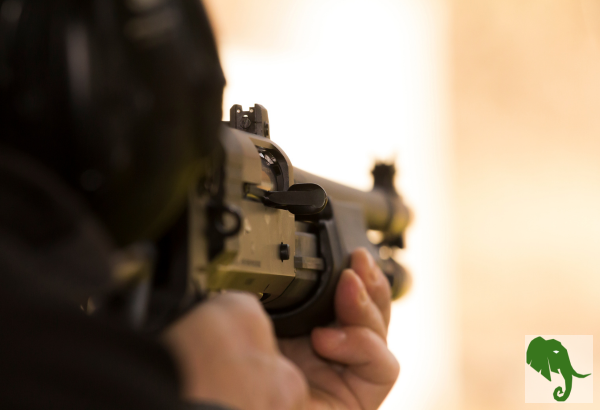
How To Actually Reduce Active Shooter Events in Schools
I got all fired up after the recent active shooter event, perpetrated by a 14 year old, at Apalachee High School in Winder, Georgia. Not …
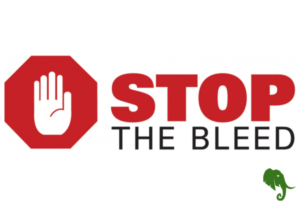
Overview Season 1: Episode 3 In this episode, we discuss the Stop the Bleed program with Gina Solomon, Trauma Program Manager at Gwinnett Medical Center in Lawrenceville,…
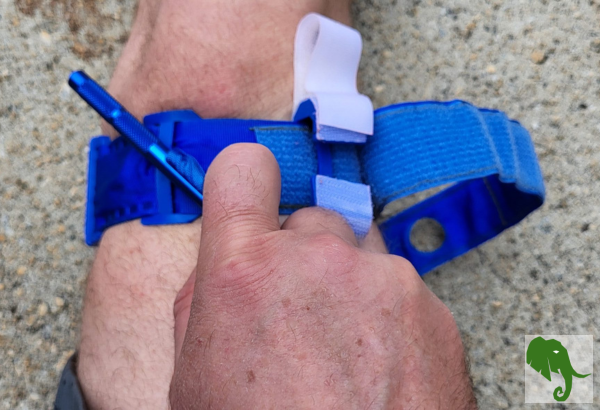
The Essential Guide to Tourniquets
Tourniquets are vital tools in emergency medical situations, particularly when dealing with severe bleeding. Understanding their use and the best practices can make a life-saving…
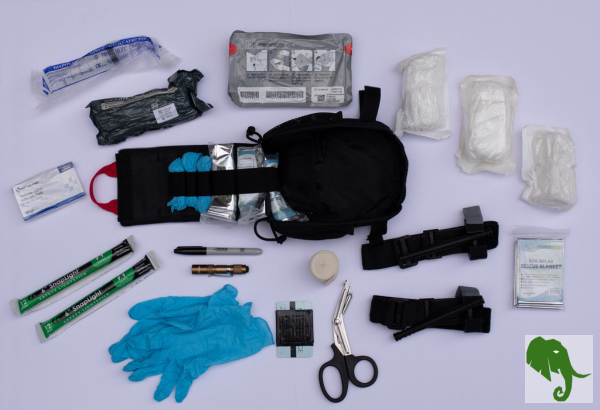
Building a Comprehensive Trauma Kit for Emergencies
In times of crisis or accidents, being equipped with the right tools can make the difference between life and death. Whether you’re out in the…

Read other OwnGuard Solutions blog posts
Read our other posts centered around being safer and better prepared.

